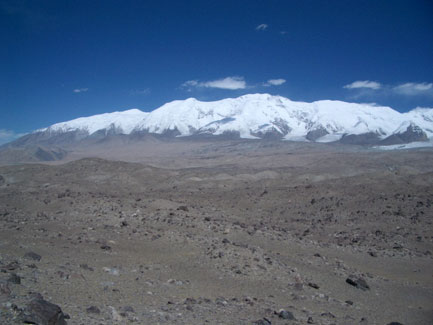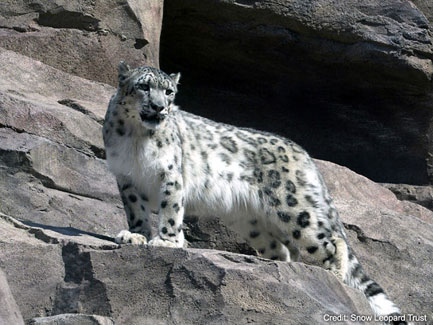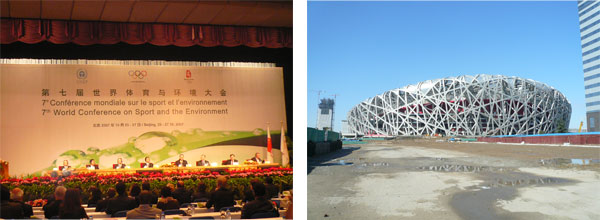|
Chine
Mars 2012, Un monde connecté
Révolution « internet », nouveaux médias sociaux, smartphones, notre planète n'a jamais « tourné » aussi vite ! Elle n'a malheureusement jamais été aussi abusée qu'aujourd'hui.
Un petit coup d'aile du petit moineau éco-détective que je suis vous montrera comment tout est lié. Le développement économique de nombreux pays, la Chine notamment, dépasse l'imagination. La consommation chinoise affole les compteurs, y compris ceux de la biodiversité. Du fait d'une plus grande demande de produits médicinaux, gastronomiques et de décoration de luxe, tigres, panthères, rhinocéros, éléphants, ours, requins, tortues, pangolins, etc… (la liste est très longue) sont exterminés. Le mot n'est pas trop fort quand on sait que plus d'un rhinocéros est tué par jour en Afrique. Ne parlons même pas de la consommation de bois qui rase tant de forêts tropicales.
Jeter la pierre aux chinois serait bien facile lorsque l'on sait le mal qu'a la France, par exemple, à vivre avec quelques loups, une petite dizaine d'ours des Pyrénées et de rares lynx. Pour agir durablement, il est non seulement important d'éduquer les populations des régions concernées en Afrique ou en Asie, mais aussi d'accompagner les jeunes chinois dans une dynamique environnementale les sensibilisant à l'impact de leur pays sur l'avenir écologique de notre planète. Ils pourront alors devenir les leaders de la conservation mondiale, avec des effets positifs à la fois pour leurs pays et le reste du monde.
Eco-Sys Action, dont je suis le petit ambassadeur, souhaite donc répondre, à son échelle, à cette double nécessité. Plusieurs actions sont menées en ce sens, dont le tournoi de l'Eco-Sys Action Football Cup (EAFC) de Pékin qui a rencontré un vif succès (voir le poster qui a marqué les esprits et suscité de nombreuses questions des enfants et des parents). Je peux vous assurer que mes amis chinois ne demandent qu'à apprendre et à propulser leur pays sur le devant de la scène environnementale. Parallèlement, Eco-Sys Action soutient déjà de nombreux projets avec des organisations privilégiant des actions pédagogiques, sociales et économiques telles que Awely, des Eléphants et des Hommes, the Snow Leopard Trust, Action for Cheetahs in Kenya, Lion Guardians, etc.
Et les nouvelles technologies ? Et bien elles peuvent justement servir à véhiculer des messages positifs, relier des projets entre eux, et connecter des actions avec les jeunes comme dénominateur commun. C'est à cette vitesse participative qu'un meilleur équilibre peut s'affiner, et venir en aide à plusieurs espèces fortement menacées.
Lewa, Kenya, novembre 2010
Triste journée
Stumpy, mon amie rhinocéros noir, a été tuée la nuit dernière, sauvagement massacrée par des braconniers qui ne lui ont laissé aucune chance. Après avoir également blessé son bébé de un an et demi (mais qui va mieux maintenant), ils ont découpé sa corne qui sera probablement envoyée en Chine afin d’être réduite en poudre pour la médecine traditionnelle chinoise.
Stumpy était âgée de 41 ans et avait eu 8 petits au cours de sa vie. C’est le troisième rhinocéros tué à Lewa depuis un an, les premiers de toute l’histoire de la réserve, et la preuve évidente que cette année 2010 est terrible pour cet animal en Afrique. Les chiffres sont incroyables. On atteindra plus de 300 rhinos de tués en Afrique du Sud avant la fin de l’année, pratiquement un tous les jours ! Le Zimbabwe est aussi touché, tandis que le Kenya a eu une vingtaine de cas.
Pourquoi ? Parce que chaque gramme de corne vaut plus cher que de l’or ! La demande en Chine augmente, et les gens continuent de croire que la corne de rhinocéros a des vertus curatives contre certaines maladies comme le cancer, ce qui est totalement faux. Lewa va donc encore renforcer sa sécurité dans cette « guerre des rhinos », et continuer son travail admirable avec la population locale. Mais c’est aussi en Chine qu’il y a un profond besoin d’éducation, car dans 5 ou 10 ans, il y aura encore beaucoup plus de gens aisés financièrement qui demanderont cornes de rhinos et ivoire d’éléphants. Il y a bel et bien une hémorragie qui ne peut être enrayée que d’un côté. Tant qu’il y aura une demande importante, il y aura des braconniers prêts à tout pour gagner de l’argent « facile ».
Aujourd’hui, un autre rhino noir est né à Lewa, comme un symbole de résilience d’une espèce fragile dont le sort est entre les mains des hommes. En Afrique du Sud, plusieurs écoles sont déjà passées à l’action pour dire « non au braconnage ». Le rêve serait d’avoir le même style d’action à Hong Kong et en Chine. Et comme les rêves se construisent, je peux vous promettre que cela arrivera dans les années qui viennent, parole de moineau !

Sakya, China, October 2010
Hands of hope
Ten thousand hands rising under a magnificent blue sky, 10 000 times more hope for snow leopards. Perched on one of the prayer flags, a lungta, that are strung everywhere in this area and colour the mountainsides, I help with the promise of the people reunited here during this annual Buddhist festival: protect snow leopards and do not engage in illegal trade of wild animals.
In the high Tibetan plateaus, this ceremony is welcomed by snow panthers, still victims of poaching for their bones and skin. The protection of this remarkable animal and it's prey is urgent. Thanks to the cooperation of the Snow Leopard Trust and the Shan Shui Conservation Center, moments like today are great steps towards better educating the local population.
China represents 60% of snow leopard habitat between Qinghai, Tibet and Gansu, and is home to close to 40% of the total population. Interestingly, few Chinese know of their existence and it is rare to find someone who knows that this feline is native to their immense country.
Now lets imagine 10 000, 10 000 hands lifting in Beijing, Shanghai, Hong Kong, Guangzhou and throughout the country...; China will become the heart of conservation for snow leopards and other threatened species, with a strong message to the entire world. Protecting its national treasure will become, little by little, second nature and it is now, with these hands almost touching the sky, that victory is built.


Qingdao, China, October 2010
China's role
The 2008 Olympic Games have long been over, the sailboat races are only a distant memory, but crowds of tourists continue to flock to the seashore at Qingdao, a large city situated in the Northeast of China on the Yellow Sea.
Flying over these few hundred meters of beach, I can't help but think of the over exploitation of our oceans with the thousands of shells and marine turtles sold as decorations, and even tiny living fish sold in plastic key chains. I also reflect on the difficulties of the fishermen, who are now no more than circus animals trying to flaunt their meager catch under the cameras of passing tourists.
My feathers freeze at the thought of so much proof confirming the uncertain future of our oceans! It is not a toy, we do not own it and it does not contain infinite resources. I would like to loudly chirp my dissatisfaction but before throwing accusations, it is necessary to explain and above all it is necessary to do better ourselves.
So I whispered the story of the oceans to a few attentive youth; one day I will show them Jacques Perrin and Jacques Cluzaud's film, “Oceans” with it's breathtaking images which arouse so many positive emotions, simply by showing the beauty of the marine world, its power and its fragility.
In China, like elsewhere, the youth are ready to take up the fight. The just need to be made aware of the problems, the solutions as well. They will find them too, I am sure. Daniel, one of the region's youth, wants to hep me. He is studying in Shanghai and with his friends he hopes to make a difference. He loves nature and his country. He is responsible.
Him, his friends, others, behind a little ball of orange feathers, I chase my black ideas like the accidental pollution a bit further North in Dalian, and take to the sky again, confident in my dream to create eco-centers in China where the youth can go to learn about the fragile balance between nature and Man. China has an exceptional role to play in the future of our planet, and this new generation has the possibility to put their country in a model position.


World Conference on Sports and Environment, Beijing, China, October 2007
Eco-Sys Action was invited by the United Nations Environment Programme (UNEP) to this conference jointly organised by UNEP, the Olympic Committee and Bocog, the Beijing Organizing Committee for the 2008 Olympic Games.
Participants from all over the world exchanged ideas and experiences on how sporting events can become sustainable. Speeches from the Torino Organizing Committee and Rio de Janeiro 2007 PanAmerican Games Committee were among the most interesting. In his keynote address, Jacques Rogge, president of the IOC reminded everyone of the need for sport to be more meaningful and environment-friendly.
Visits to a Beijing school promoting sustainable development and to the Olympic village were scheduled to help understand Beijing's efforts towards supporting the environment in spite of a heavy fog covering the city that reminded every participant of the huge pollution affecting China's capital.
|
Tous les messages
Indonésie
Hong Kong
Inde
Qatar
Afrique (en vol)
Burkina Faso
Botswana
Purple Cake Day
Bonne Journée Mondiale du Moineau à tous !
Un monde connecté
La « bataille » des guépards
La rage de vivre
Scubster, du rêve à la plongée.
Le requin le plus rare du monde !
Le tournoi de l'Eco-Sys Action Football Cup (EAFC) de Kaw en Guyane remporte le Prix Jean Roland
Le clin d'oeil de Jean-Pierre Papin
Archives
avril 2012
mars 2012
octobre 2011
septembre 2011
juin 2011
avril 2011
mars 2011
février 2011
décembre 2010
octobre 2010
août 2010
juin 2010
mars 2010
categories
|
|

 With the upcoming first Eco-Sys Action International Conservation Football Cup (ICFC) in 2009, the conference was a gathering not to be missed and everyone showed interest in the ICFC format.
With the upcoming first Eco-Sys Action International Conservation Football Cup (ICFC) in 2009, the conference was a gathering not to be missed and everyone showed interest in the ICFC format. 

